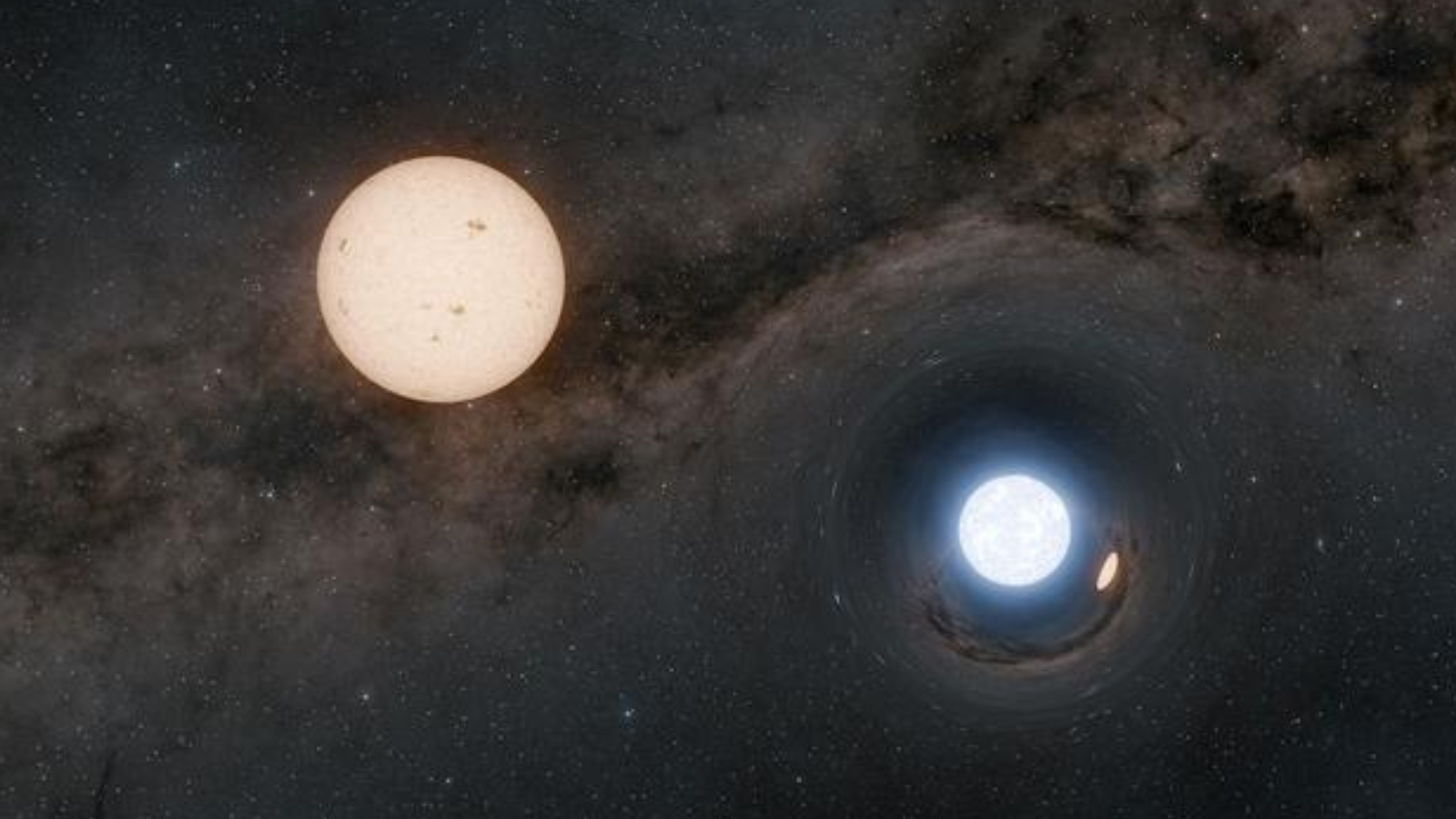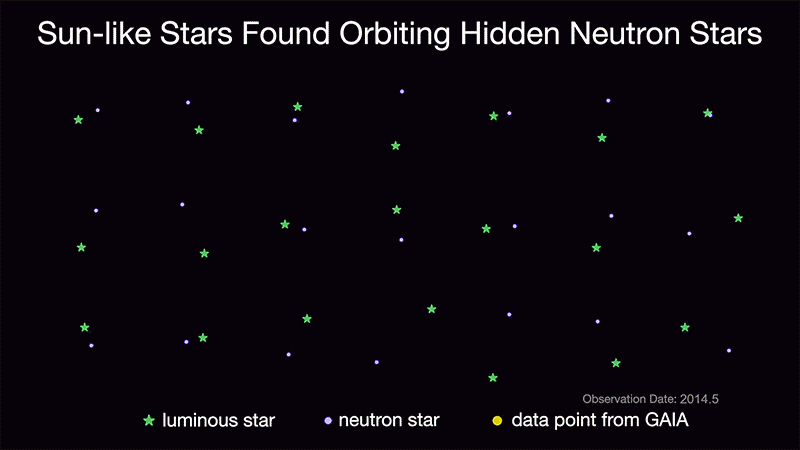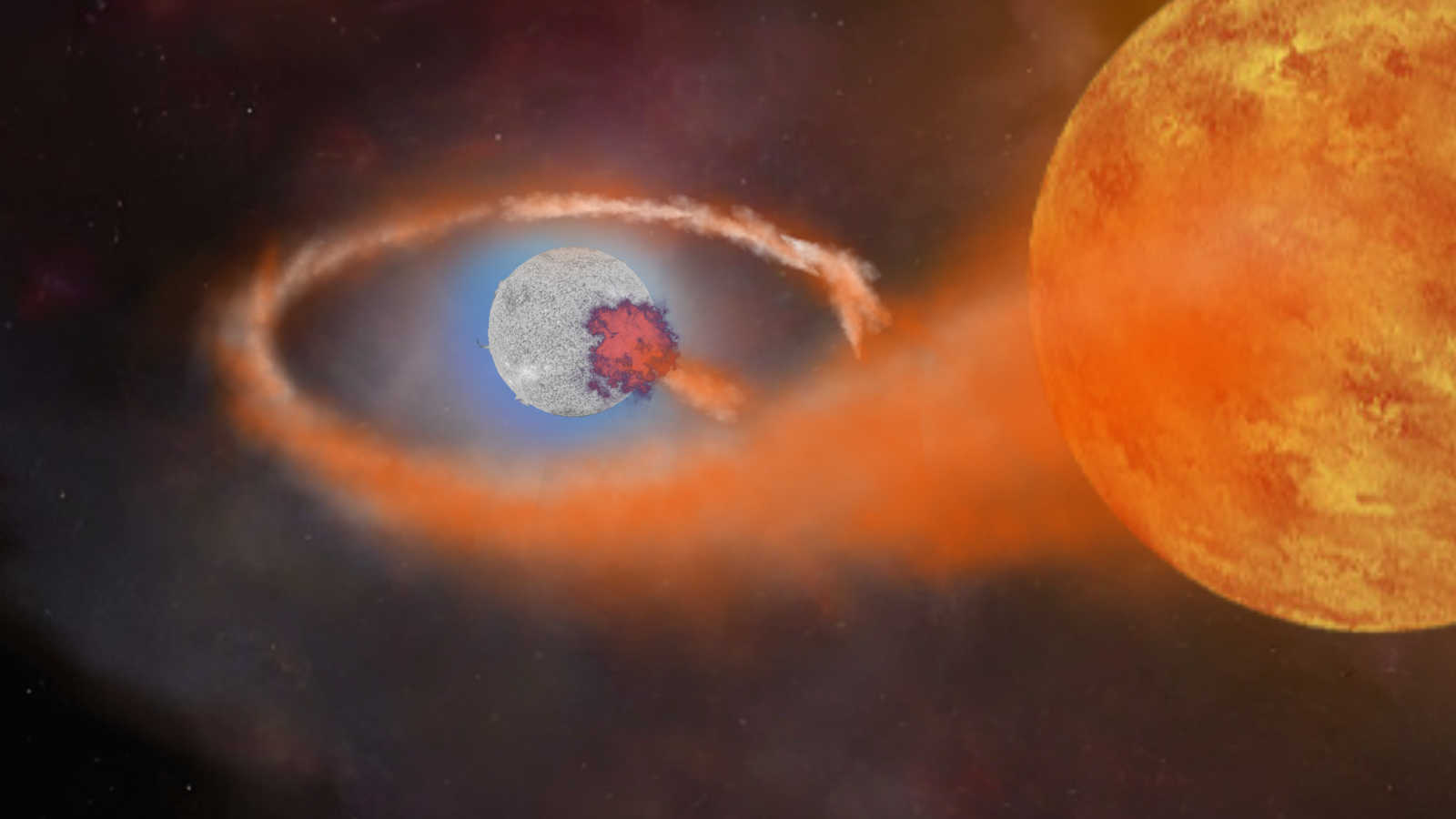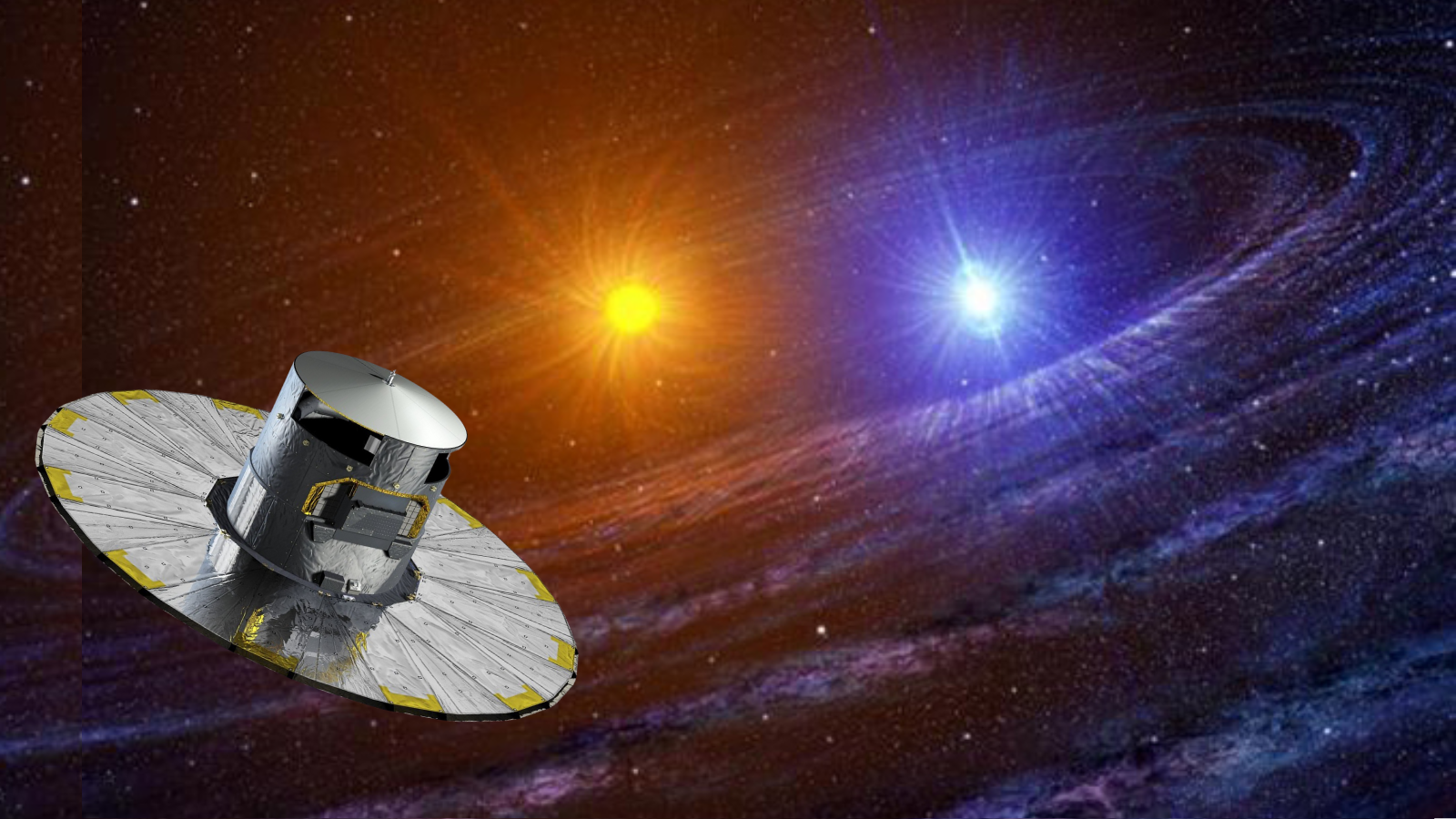
Astronomers have discovered 21 "one in a million" binary systems in which sun-like stars orbit a hidden "dead star," an extreme dense and compact object called a neutron star.
One of the neutron stars discovered in this clutch of binaries is one of the most massive dead stars of this type ever seen.
Though we are used to stars being singletons like our sun, at least half of all stars about the mass of the sun exist in binary systems. This proportion increases to 75% for more massive stars. As a result, stellar remnants like neutron stars and black holes (which are born from the deaths of giant stars) also exist in binaries, both with other dead stars and with massive stars.
One binary configuration that has proved to be vanishingly rare, however, is a neutron star orbited by a sun-like star. Using the European Space Agency's (ESA) Gaia spacecraft, astronomers have discovered a new population of these elusive binary systems.
Related: James Webb Space Telescope finds neutron star mergers forge gold in the cosmos: 'It was thrilling'
Neutron stars are often found orbiting ordinary stars like the sun, but at close proximities that lead to these dead stars feeding on their companions like cosmic vampires. What makes this clutch of neutron star-normal star binaries so special is they are much more widely separated, making them something that could challenge our understanding of how systems like this are born.
"Binary evolution models predict that neutron star and normal star binaries should be born mainly in tight orbits, with the neutron star and companion almost touching," discovery team leader Kareem El-Badry, a researcher at the Harvard-Smithsonian Center for Astrophysics (CfA), told Space.com. "These binaries are much wider than this, with separations around 300 to 1,000 times the size of the stars.
"This means that alternative neutron star-normal star formation models may be needed."

These neutron stars resist feeding on their stellar companion
Neutron stars are born when stars with at least eight times the mass of the sun exhaust their fuel for nuclear fusion, ending the outward pressure that supports them against the inward pressure of their own gravity.
As the cores of such stars collapse, their outer layers are blown away in massive supernova explosions. This leaves a stellar core with a mass between one and two times that of the sun, with a width of around 12 miles (20 kilometers).
One of the newly discovered neutron stars is right on the edge of that theoretical mass range, having 1.9 times the mass of the sun, making it among the most massive neutron stars ever seen.
What is really significant about these binaries is they raise the question of how they survived one star's transformation into a neutron star.
During this process, the massive star should have violently attacked its small stellar companion, likely even engulfing it, albeit temporarily. When the soon-to-be neutron star exploded in a supernova blast, current models suggest the smaller star should have been "kicked away," ending the binary's existence.
"The discovery of these new systems shows that at least some binaries survive these cataclysmic processes, even though models cannot yet fully explain how," El-Badry said.

When neutron stars have been found orbiting "living" main sequence stars, they've tended to be stripping material from those stars like cosmic vampires. Such binaries are notable because the neutron star and the main sequence star are close enough together to facilitate the transfer of matter.
This matter has angular momentum, so it can't fall straight into the neutron star, instead forming a swirling flattened cloud of material called an "accretion disk." While the material is gradually fed from the accretion disk to the neutron star, the result when it hits the surface is anything but gentle. This cannibalistic feeding process can release as much energy in a second as it takes the sun one million years to radiate.
This emission of energy, much of which is poured into powerful high-speed jets, makes these neutron star-donor star binaries highly conspicuous to astronomers, especially in X-ray and radio wavelengths. Lacking such emissions across the electromagnetic spectrum, more widely separated binaries with quiet and dark neutron stars have been more elusive.
"Most neutron star binaries are discovered via X-rays or radio data resulting from current or past accretion," El-Badry said. "These neutron stars have not accreted anything and don’t produce X-rays or radio at a detectable level, so they’re harder to find."
Related: 'Stellar vampires' may feed on hidden stars in their systems

Gaia is capable of making discoveries like this because of its ability to accurately measure the position and motion of billions of stars against the background sky. Precise tracking of stellar movement reveals the gravitational influences exerted on these stars, which are the visible components of these binaries, from their dark neutron star companions, even though the two objects in the duo are widely separated.
This influence is detected as a tiny wobble in the motion of the star caused by the tug of the neutron star companion. This marks the first time that neutron stars have been detected via their gravitational influence alone.
"Gaia can detect the extremely small shifts of the solar-type stars on the plane of the sky, measuring their position with a precision comparable to the width of a human haired viewed from 3,000 miles [5,000 kilometers] away," El-Badry said. "It is the only astronomical facility that can do this currently."
Gaia is actually more sensitive to these systems' wider orbits and longer orbital periods. El-Badry explained that if these neutron stars were closer to their companion stars, the wobble they cause would have been too small for the ESA spacecraft to spot.
Gaia was also assisted by the fact that these binaries are close to Earth, at distances of just 3,000 light-years or so. This might seem like a vast distance, but in comparison to the 100,000 light-year-width of the Milky Way, it is relatively small.
Even though the detection of 21 of these binary systems is a big deal, El-Badry said it is unlikely to change thinking about the rarity of wide neutron star-normal star binaries in the cosmos.
"We estimate that about one in a million solar-type stars is orbiting a neutron star in a wide orbit," he explained. "We were not that surprised to discover them, though! We hoped a population like this might be detectable with Gaia, and characterizing these objects has been one of my research group’s main projects in the last couple of years."
El-Badry explained that the next step for this research is for the team to make models to explore the formation and future evolution of neutron star-normal star wide binaries.
The CfA researcher also intends to use Gaia to search for wide binaries with a normal star and a non-feeding black hole.
"We don't know for sure how these black hole binaries formed either," El-Badry concluded. "There are clearly gaps in our models for the evolution of binary stars. Finding more of these dark companions and comparing their population statistics to predictions of different models will help us piece together how they form."
Gaia has already demonstrated its capability to detect quiet and dark black holes.
In April 2023, Gaia detected two dark black holes, designated Gaia BH1 and Gaia BH2, located 1,560 light-years and 3,800 light-years away from Earth, respectively. Just this year, the space telescope discovered Gaia BH3, just 2,000 light-years from Earth. These are the three closest black holes to our planet ever detected.
The team's research is published July 15 in the Open Journal of Astrophysics.







